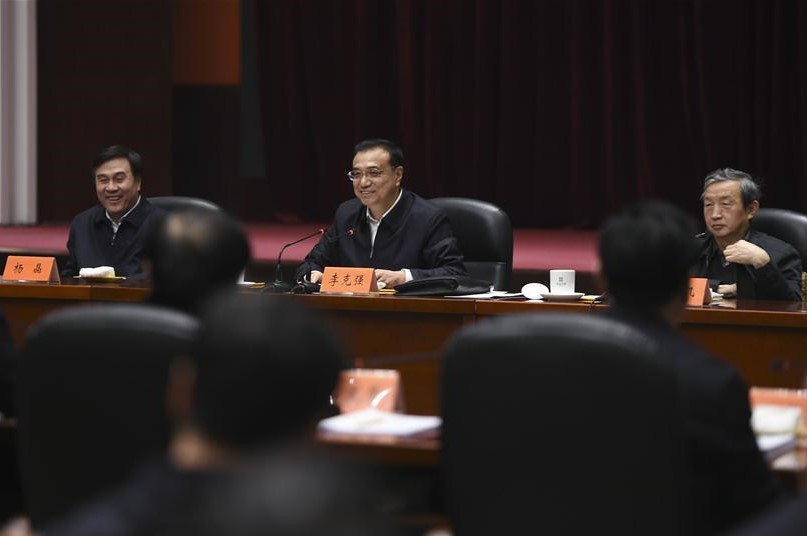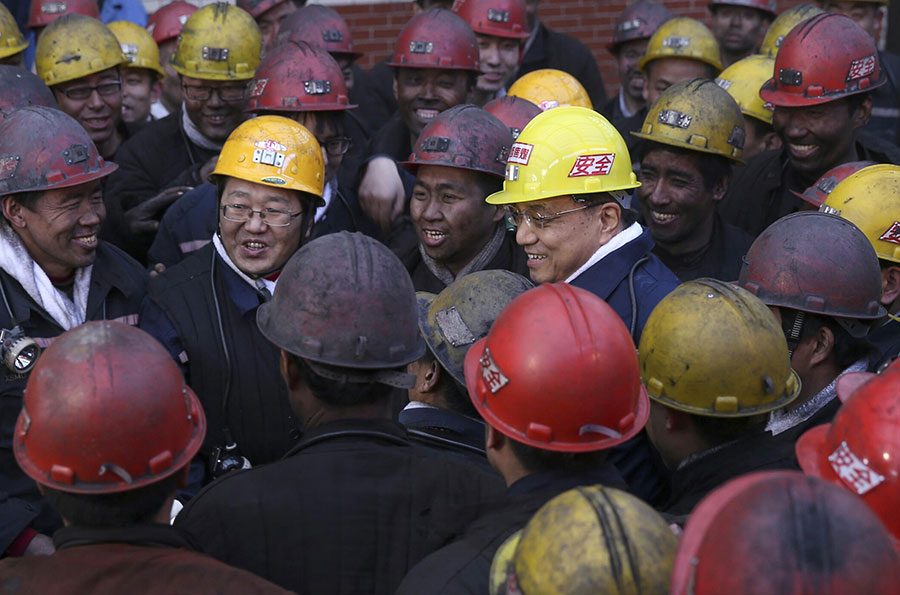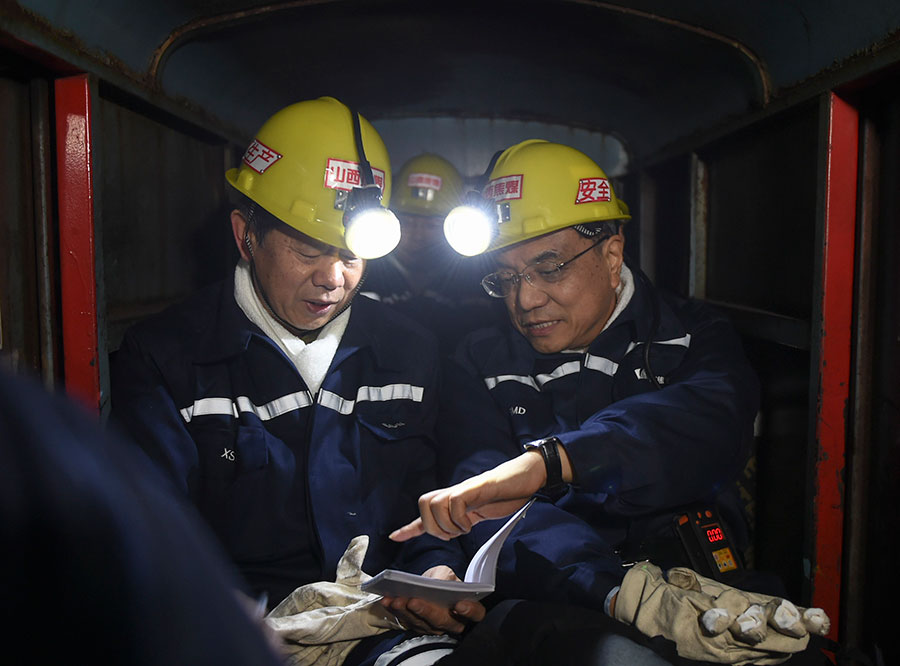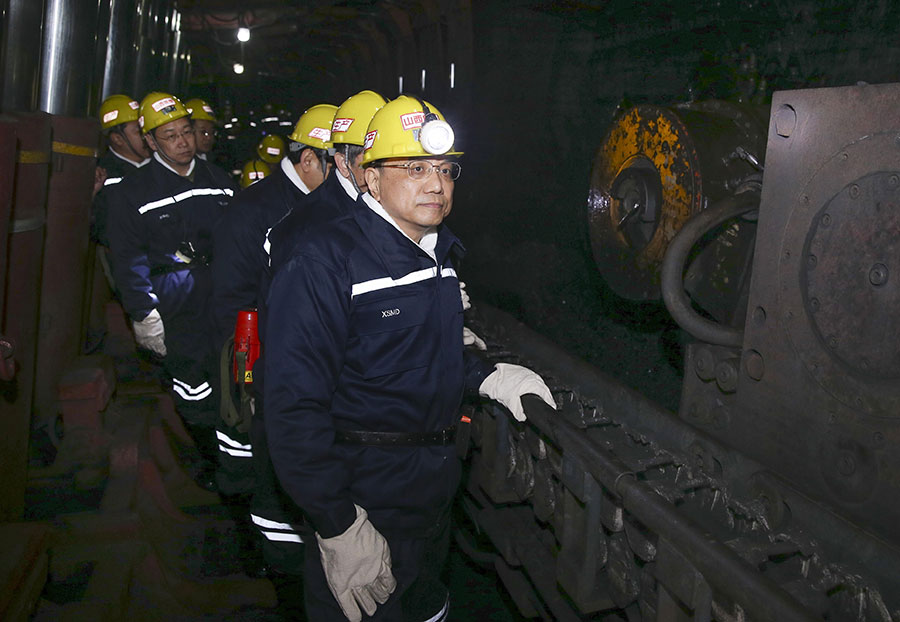Focusing on mining development opportunities with “The Belt and Road Initiative”
 |
| Photo by Li Zhentao |
| Geosciences Cooperation Seminar of Countries along “The Belt and Road Initiatives” held on October 20th, 2015 at Tianjin Meijiang Convention and Exhibition Centre During CHINA MINING 2015. |
China speeds up “the Belt and Road Initiatives” in 2015, which gives great incentive to global mining industry in depression. During CHINA MINING 2015, it came into one of hot issues as expected that what development opportunities “the Belt and Road Initiatives” will bring to global mining industry.
Many experts analyzed and considered that deeper advancement of “the Belt and Road Initiatives” will surely expand the cooperation space of countries along the belt and road and fully motivate their complementary advantages in resources, market, capital, industry, technology and talents.
With current trend of mining globalization, the strategic prospect of “the Belt and Road Initiatives” indicates sincere cooperation among countries along the belt and road, which will surely convert their advantages in resources into new power to economic growth so as to bring unprecedented new development opportunities to global mining industry.
Abundant and Highly Complementary Resources
According to “the Belt and Road Initiatives”, energy resources will be one of key field where countries along the belt and road conduct their cooperation. There is no doubt that the implementation of “the Belt and Road Initiatives” will provide a new platform for mining cooperation among these countries.
As indicated by Mr. Kerim Tuncer Salikavak, Deputy Director of Administration of Mineral Survey and Exploration of Turkey in CHINA MINING 2015, “‘The Belt and Road Initiatives’ provides new platform for us. Countries along the belt and road are close to each other in history and mutual cooperation is very important.”
Countries along “the Belt and Road Initiatives” boast abundant mineral resource, serving as the main supply base of mineral raw materials, and the position they stood in global economic and social development can be described with the word of “prominent”. The public data show that the mineral resources deposited in this area are nearly 200 types with a value of over 250 trillion dollars, accounting for 61% of the world. Among which, China and Russia own the areas with highest coal reserves in the world; Uzbekistan won the reputation of “the home to gold”; countries in Southeast Asia boast tin-ore belt with a length of 2500 kilometers and also serve as the most famous diamond production area in the world; countries in West Asia possess the largest amount of proven petroleum reserve at present; India and Russia are important diamond production area and the Kursk of Russia is distributed with the largest iron-production basin in the world.
Why do the areas along “the Belt and Road Initiatives” boast so abundant mineral resources? In the afternoon of October 20th, Mr. Pei Rongfu, Academician of Chinese Academy of Engineering, introduced in public the macroscopic geological background of areas along “the Belt and Road Initiatives” during Geosciences Cooperation Seminar of Countries along “The Belt and Road Initiatives”. “In the four metallogenic zones among global metallogenic units, there are 12 metallogenic areas and belts in the areas along ‘The Belt and Road Initiative’ and a total of 326 large and extra large deposits in all metallogenic areas and belts.”
And more importantly, there is greatly complementary in the cooperation among countries on mineral resources. For example, the minerals and strategic emerging minerals including copper, cadmium and nickel which run short in China exactly are the advantageous resources in other countries along the belt and road. The Central Asian countries with abundant oil and gas resources are relatively weak in exploration development and exploitation ability, which can cooperate with China to a promising prospect and great potential.
Mr. Kyaw Kyaw Ohn, Assistant Director from of Geological Survey and Mineral Exploration Bureau of Myanmar, indicated during CHINA MINING 2015 that Myanmar is rich in mineral resources but relatively backward in traditional development means. “At present, further mineral prospecting and development will be conducted in East Myanmar. We are amending relevant laws and provisions to attract foreign investors and expect to import advanced technologies and methods to help Myanmar to resolve difficulties encountered in mining development.”
This situation is very common. China is geologically adjacent to the Southeast Asia and mutually connects in geological structure. The Southeast Asia locates at the southern extend belt of “three jiang” metallogenic belt in southwestern China and metallogenic belt of South China, featuring with favorable metallogenic conditions, abundant mineral resources, but low level in mineral prospecting and development. Therefore, “Developing geoscience cooperation between China and countries in Southeast Asia is conducive to deepening the understanding in metallogenic rules of areas and better advancing the sustainable development in regional mining economy.” Dr. Mr. Lin Fangcheng from Chengdu Geological Center of China Geological Survey said.
An Extensive Prospect with Growing Enthusiasm on Cooperation
With the market economic condition of reciprocity and mutual benefit, taking full advantage of and integrating all strengths in resources, capital, talents, technology and equipment are attractive to global mining industry remaining in deep adjustment. Before the opening of CHINA MINING Congress and Expo 2015, relevant news came in a row that countries along “the Belt and Road Initiatives” take active efforts into the advancement of mining cooperation.
The first non-governmental think-tank on mining cooperation of “the Belt and Road Initiatives” was established in China and the enterprises and institutions can access to reserves, output and development situation of over 50 kinds of mineral resources in 65 countries along the belt and road. The first Cambodia state geological laboratory will be built in the Guangxi Zhuang Autonomous Region, and the first Private Entity Fund on “the Belt and Road Initiatives” mineral resources and related industry officially launched in Beijing, aiming to raise 10 billion yuan before the end of this year…
Currently, many countries along the belt and road have realized or personally experienced that the construction of “the Belt and Road Initiatives” in post-financial crisis will able to share dividend of reform and development in China and convert their strengths in local resources, technology and capital into the market and cooperation advantages. For this purpose, countries carry out cooperation in mining of “the Belt and Road Initiatives” along the extremely high enthusiasm
During the recent Northeast Asia Mining Cooperation Conference under China-Russia Expo 2015, delegates from countries including Russia and Mongolia got together in Harbin to share their achievements in mining exploration with each other and express their desire to active cooperation. Russia specially prepared a thick brochure to recommend their mining projects. 22 mining projects cooperation between China and Russia were established with just half a day.
During the Chin-ASEAN Mining Cooperation Forum in September, delegates from China, ASEAN and other countries focused on the mining opportunities with “the Belt and Road Initiatives” and had in-depth discussions on topics of mining situation, geoscience research and cooperation, mining policy research and geological environment protection.
After the decision of constructing state geological laboratory with Guangxi Zhuang Autonomous Region in China, Mr. Di Ti, State Secretary of Cambodia Ministry of Minerals and Energy, indicated that “we expect to rewards our both countries and also bring more benefits to countries along the belt and road. And more exchanges with China Ministry of Land and Resources are welcome.”
The areas along “the Belt and Road Initiatives” are most vigorous in global economic development and the largest consumer of global energy resources. During Geosciences Cooperation Seminar of Countries along “the Belt and Road Initiatives”, delegates from departments of mineral resources of Myanmar, Vietnam, Thailand, Tajikistan, Pakistan and Turkey introduced their resources possession and geological exploration and meanwhile expressed their strong desire to conduct cooperation.
“This fully indicates that countries along the belt and road share the common vision on strengthening efforts to mineral resources exploration and development to achieve the transformation from resource advantages to economic advantages.” An expert told the correspondent that, “Cooperation is the essential way.”
The expert told the correspondent that surplus productivity is one of the largest challenges faced by China in the mining industry. “if it is possible for us to transfer our technology and capital, it will not only bring benefits to countries along the belt and road, but also provides opportunity for us to optimize the mining industry structure.”
Taking steel industry as an example, large investment on infrastructures construction of “the Belt and Road Initiatives” will push up the demand for steel and most countries along the belt and road are important targeted market of our steel export. With such cooperation in production capacity, it will surely step up our steel plant going out and be beneficial to not only relieve surplus productivity in China, but also further reduce cost through foreign superior mineral resources.
Geology Leading the Way with a Promising Future
Experts consider that “the Belt and Road Initiatives” is a major innovation for all-around opening in China, the engine of global economic growth. In the view of mining development and sustainable development in developing countries, Pei Rongfu held the opinion that “the Belt and Road Initiatives” can be regarded as the pioneering work in current era.
Either innovation or initiative, the construction of “the Belt and Road Initiatives” greatly promote mining development in areas along the belt and road and bring opportunities to geological works. Many experts considered that the construction of “the Belt and Road Initiatives” will provide a stage for geological works and international geoscience cooperation to show themselves well.
Pei Rongfu pointed out during Geosciences Cooperation Seminar of Countries along “the Belt and Road Initiatives” that developing mining industry is a non-profit work in geology system with the purpose of resolving the “resource” problem in minerals, and mining development gives priority to commercial geological work in market with the purpose of resolving the “asset” problem in minerals. With “resource” and “asset”, business running with going public is also required to form “capital”.
He therefore put forward that the position of geological work stood in the mining development of countries along the belt and road. “‘Resource’ among the ‘three points’ in mining development should focus on ore-deposit geology and prospecting geology, ‘asset’ should be responsible by the mining entrepreneur and ‘capital’ should mainly follow the economics and commercial science.”
In addition, he also proposed the establishment of “the Belt and Road Initiatives” mineral exploration risks fund to instruct the enterprises to package exploration in ore-concentrated area to immediately make breakthroughs in prospecting mines.
The correspondent was informed from CHINA MINING 2015 that some achievements have been made in geoscience cooperation between China and countries along the belt and road. “China Geological Survey is strengthening efforts to jointly conduct regional geological survey, geophysical exploration and geochemical mapping with countries along the belt and road.” Mr. Wu Zhenhan, Director of Department of Sci-Tech and foreign Affairs under China Geological Survey, introduced that, “For example, the 1:5000000 International Geological Map of Asia jointly accomplished by more than a hundred geologists for different Asian countries under the organization of Geological Research Center of Chinese Academy of Geological Sciences is evaluated as the best geological map in 2014 by Commission for the Geological Map of the World.”
In many experts’ view, these solid works surely provided essential macro-geological information for mining development of “the Belt and Road Initiatives”. During CHINA MINING 2015, many officials and scholars from state geological survey institutions in other countries expressed their strong desire to conduct geoscience cooperation. Mr. Syed Ishtiaq Khan from Pakistan Geological Survey indicated that Pakistan was urgent to maximize energy utilization rate and develop prosperous mining industry due to the need of economic development. “It is expected that geological institutions from other countries jointly participate in the geological survey in Pakistan.”
“There is a mutual integration among different civilizations and an enhancement on mutual understanding and friendship. We sincerely hope that this conference, especially this seminar, will further promote the integration and cooperation in energy and resources among countries along the belt and road to achieve mutual advantages complementary to each other, share risks and results in common and ultimately realize a development with mutual benefits.” The host sent such good wishes to the ending of Geosciences Cooperation Seminar of Countries along “the Belt and Road Initiatives”, may presenting heartfelt voices of all attendees. (Li Xiang)
About CHINA MINING
Since first held in 1999, the scope and influence of CHINA MINING has grown rapidly year by year. As a global mining summit forum and exhibition, CHINA MINING Congress and Expo has become one of the world’s top mining events, and one of the world’s largest mining exploration, development and trading platforms, covering all aspects of the whole mining industry chain, including geological survey, exploration and development, mining rights trading, mining investment and financing, smelting and processing, mining techniques and equipment, mining services, etc. playing an active promotion role in creating exchange opportunities and enhancing mutual cooperation between domestic and foreign mining enterprises. For more information about CHINA MINING, please visit: www.chinaminingtj.org.









